This is called the odds ratio;An odds ratio of 2 means that the event is 2 time more probable given a oneunit increase in the predictor It means the odds would double, which is not the same as the probability doubling In Cox regression, a hazard ratio of 2 means the event will occur twice as often at each time point given a oneunit increase in the predictor Introduction and background Risk ratios, odds ratios, and hazard ratios are three ubiquitous statistical measures in clinical research, yet are often misused or misunderstood in their interpretation of a study's results A 01 paper looking at the use of odds ratios in obstetrics and gynecology research reported 26% of studies (N = 151) misinterpreted odds ratios as risk ratios

Hazard Ratios And Survival Curves Youtube
Hazard ratio vs odds ratio
Hazard ratio vs odds ratio-The hazard ratio would be 2, indicating higher hazard of death from the treatment Hazard ratios differ from relative risks (RRs) and odds ratios (ORs) in that RRs and ORs are cumulative over an entire study, using a defined endpoint, while HRs represent instantaneous risk over the study time period, or some subset thereof Hazard ratios sufferA logrank approach gives rise to a hazard ratio, and a variation of the Peto method for analysing timetoevent data gives rise to something in between The appropriate effect measure should be




Hazard Ratios And Survival Curves Youtube
Hence the hazard ratio represents the risk of death in the isoniazid prophylaxis group compared with the placebo group at any time during the study period The hazard ratio of death for the intervention group compared with the control group was 046 (022 to 095), which is smaller than unity (10) In every other way the hazard ratio is similar to odds ratio and relative risk wherein treatment efficacy is denoted by a hazard ratio of less than 10 in prevention trials and a hazard ratio of more than 10 in treatment trials Table 3 Hazard ratio and timetoevent analysis 1Rather the odds is threefold greater Interpretation of an OR must be in terms of odds, not
Peto's method applied to dichotomous data (Section 9442) gives rise to an odds ratio; The basic difference is that the odds ratio is a ratio of two odds (yep, it's that obvious) whereas the relative risk is a ratio of two probabilities (The relative risk is also called the risk ratio) Let's look at an example Relative Risk/Risk Ratio Suppose you have a school that wants to test out a new tutoring programThe risk ratio (or relative risk) is the ratio of the risk of an event in the two groups, whereas the odds ratio is the ratio of the odds of an event (see Box 92a ) For both measures a value of 1 indicates that the estimated effects are the same for both interventions Neither the risk ratio nor the odds ratio can be calculated for a study
I just have a question regarding hazard ratios Are these similar to odds ratio?The method of presenting the results of clinical studies canTable 2b) because the outcome was not rare (44%) Preferably, odds ratios should not be
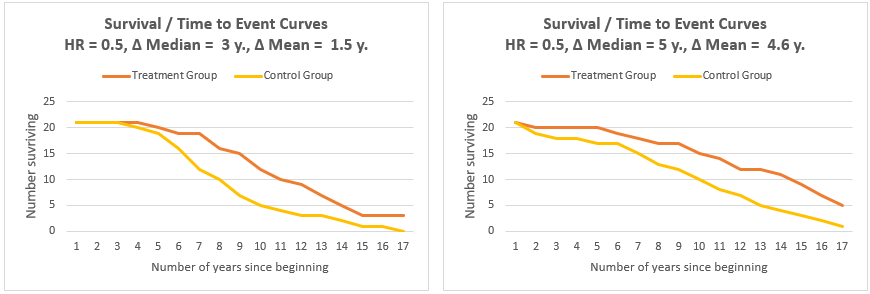



Hazard Ratio Calculator Calculate Hazard Ratio Hr Confidence Intervals P Value




Odds Ratio And Hazard Ratio For Complications Download Table
It is called that because it is the ratio of two odds Some people call the odds the odds ratio because the odds itself is a ratio That is fine English, but this can quickly lead to confusion If you did that, you would have to call this calculation the odds ratio ratio or the ratio of the odds ratiosHazard ratios differ from relative risks (RRs) and odds ratios (ORs) in that RRs and ORs are cumulative over an entire study, using a defined endpoint, while HRs represent instantaneous risk over the study time period, or some subset thereof Hazard ratio (E vs C) for the time periodA value lower than 100 indicates decreased risk The 95% confidence intervals and statistical



Odds Ratio




Biostatistics Primer What A Clinician Ought To Know Hazard Ratios Sciencedirect
Odds ratio (OR) Hồi qui logistic (logistic regression) Cắt ngang (crosssectional) Prevalence ratio (PR) hay OR Hồi qui nhị phân (binomial regression) hay Hồi qui logistic Theo thời gian (prospective) Relative risk (RR) Hồi qui Cox (Cox's regression model) Thử nghiệm lâm sàng RCT RR hay Hazard ratio (HR)In a control group The odds ratio (OR) is the odds of an event in an experimental group relative to that in a control group An RR or OR of 100 indicates that the risk is comparable in the two groups A value greater than 100 indicates increased risk; The hazard ratio is the ratio of these two expected hazards h 0 (t)exp (b 1a)/ h 0 (t)exp (b 1b) = exp(b 1(ab)) which does not depend on time, t Thus the hazard is proportional over time Sometimes the model is expressed differently, relating the relative hazard, which is the ratio of the hazard at time t to the baseline hazard, to the risk




Hazard Ratio In Clinical Trials Antimicrobial Agents And Chemotherapy




Association Of Bisphenol A With Puberty Timing A Meta Analysis
The difference is small because in this RCT the outcome was relatively rare (14%) and the odds ratio was close to one In the cohort study example, the difference between the odds ratio and risk ratio was larger (odds ratio = 080 vs risk ratio = 092;If there was an extremely low proportion of subjects with an event in all experiments (let's sayAn odds ratio greater than 1 indicates that the condition or event is more likely to occur in the first group And an odds ratio less than 1 indicates that the condition or event is less likely to occur in the first group The odds ratio must be nonnegative if it is defined It is undefined if p 2 q 1 equals zero, ie, if p 2 equals zero or q




Hazard Ratio An Overview Sciencedirect Topics



Plos One Pcsk9 Loss Of Function Variants And Risk Of Infection And Sepsis In The Reasons For Geographic And Racial Differences In Stroke Regards Cohort
Odds Ratio, Hazard Ratio and Relative Risk 63 Table 5 Examples of RR and OR for different probabilities ˇ 1 ˇ 2 RR OR4 1 4 62 3 67 5804 01 4 03 67 66 Hazard ratio (HR) Broadly equivalent to relative risk (RR);Hazard ratio The hazard ratio in survival analysis is the effect of an exploratory?Cox regression vs logistic regression Distinction between hazard/rate ratio and odds ratio/risk ratio – Hazard/rate ratio ratio of incidence rates – Odds/risk ratio ratio of proportions By taking into account time, you are taking into account more information than just binary yes/no Gain power/precision




Relative Risk Versus Odds Ratio Usmle Biostatistics 4 Youtube




Biostatistics Primer What A Clinician Ought To Know Hazard Ratios Sciencedirect
Incidence Rate Ratios and Incidence Rate Differences For cohort studies with ongoing, periodic individual followup, we can determine the "time at risk," which enables us to compute and compare incidence rates We can summarize the findings with another contingency table with the general form shown in the table belowUseful when the risk is not constant with respect to time It uses information collected at different times TheFor instance, a disease free survival was longer for an anastrozole group compared to a tamoxifen group;
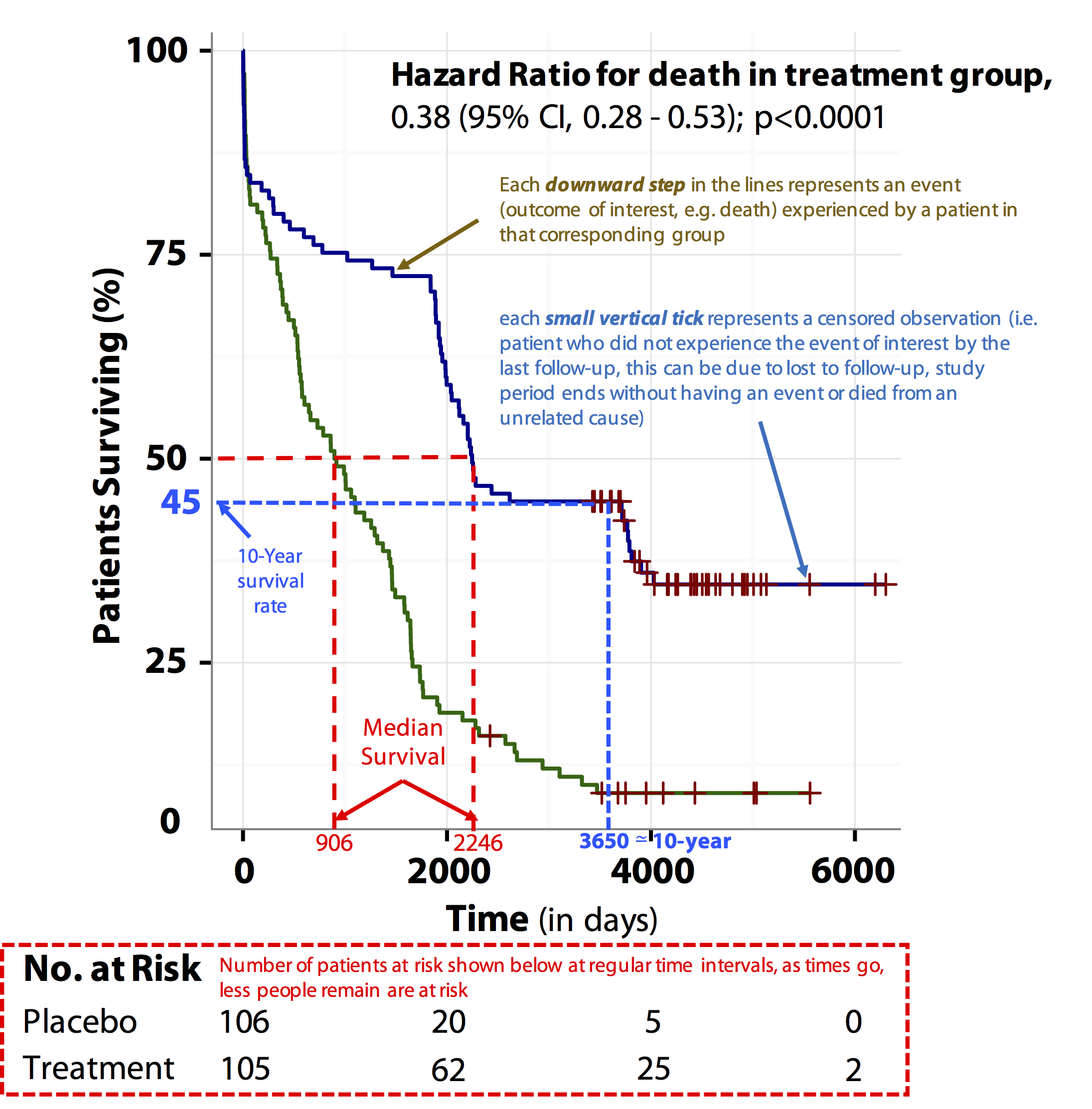



Tutorial About Hazard Ratios Students 4 Best Evidence
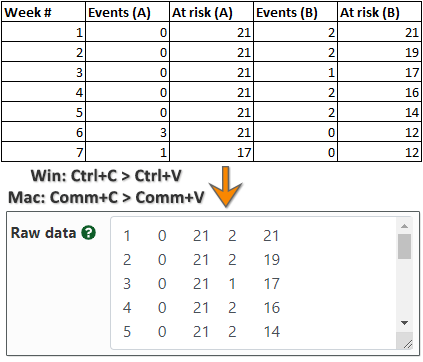



Hazard Ratio Calculator Calculate Hazard Ratio Hr Confidence Intervals P Value
Odds ratios (OR) are commonly reported in the medical literature as the measure of association between exposure and outcome However, it is relative risk that people more intuitively understand as a measure of association Relative risk can be directly determined in a cohort study by calculating a risk ratio (RR) In casecontrol studies, andFree thyroxine levels were positively associated with high coronary artery calcification score (odds ratio, 228;The odds ratio (OR) is the ratio of odds of an event in one group versus the odds of the event in the other group An RR (or OR) of 10 indicates that there is no difference in risk (or odds) between the groups being compared An RR (or OR) more than 10 indicates an increase in risk (or odds) among the exposed compared to the unexposed



Dlib Si Odds Ratio Hazard Ratio And Relative Risk



2
Or one could view the risk ratio and the odds ratio as approximations to the hazard ratio or rate ratio Rates and hazards can exceed 1, unlike risks, so there's no constraint on the hazard ratio, unlike the risk ratio Hazard ratios / rate ratios can therefore be constant over the entire range of baseline hazard / background rate RogerOdds ratio vs Relative Risk/Hazard Ratio I have a background in physics with a few courses in statistics, but I still have a hard time intuitively understanding OR I get RR as it just is a ratio of probabilities, and I look at HR as RR with a time componentAnd the statistic given was "hazard ratio 0 (95% CI , p value=0013)
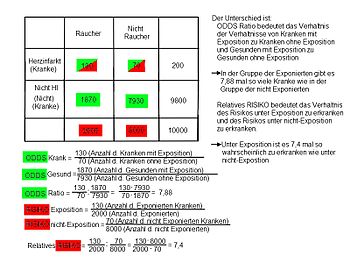



Relatives Risiko Wikipedia



Plos One Impact Of Geographic Origin On Access To Therapy And Therapy Outcomes In The Swiss Hepatitis C Cohort Study
Risk ratios, odds ratios, and hazard ratios are three ubiquitous statistical measures in clinical research, yet are often misused or misunderstood in their interpretation of a study's results A 01 paper looking at the use of odds ratios in obstetrics and gynecology research reported 26% of studies (N = 151) misinterpreted odds ratios as risk ratios , while aOdds Ratios and Log(Odds Ratios) are like RSquared they describe a relationship between two things And just like RSquared, you need to determine if this Note that the adjusted odds ratio for age is lower than the unadjusted odds ratio from the previous example This is because when other predictor variables increase the odds of the response variable occurring, the adjusted odds ratio for a predictor variable already in the model will always decrease Summary Odds Ratio vs Adjusted Odds Ratio




Pdf What S The Risk Differentiating Risk Ratios Odds Ratios And Hazard Ratios Semantic Scholar




Figure 1 A Forest Plot Of Common Odds Ratios Adjusted For Ecog Ps For Best Overall Response By A Priori Subgroups In Patients With Kras Wild Type Ppt Download
1 Log hazard ratio of dropout from the maintenance treatment program between patients in clinics B and A who take 50mg dose of methadone 2 Log hazard ratio of dropout from the maintenance treatment program between two individuals who are at clinic A and whose dosage differs by 1 mg 3 Difference in log hazard ratio of dropout from theRisk, absolute risk, odds ratio and hazard ratio These figures help to determine if the new treatment has an advantage over other treatments or placebo Ways of expressing treatment effects The absolute risk, number needed to treat, relative risk and odds ratio can be calculated by compiling a 2x2 table of study dataMore on the Odds Ratio Ranges from 0 to infinity Tends to be skewed (ie not symmetric) "protective" odds ratios range from 0 to 1 "increased risk" odds ratios range from 1 to Example "Women are at 144 times the risk/chance of men" "Men are




Odds Ratio Hazard Ratio And Relative Risk Janez Stare Semantic Scholar
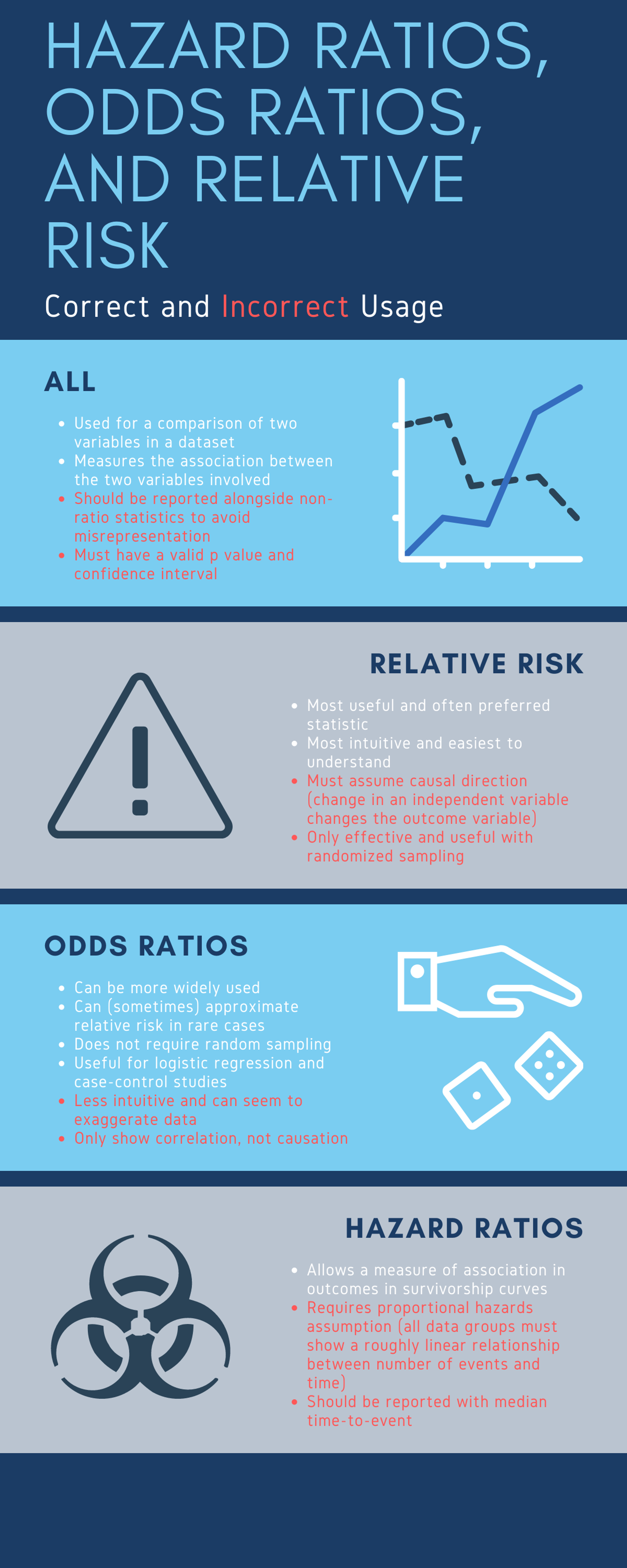



Cureus What S The Risk Differentiating Risk Ratios Odds Ratios And Hazard Ratios
The odds ratio is the measure of choice in a casecontrol study (see Lesson 1) A casecontrol study is based on enrolling a group of persons with disease ("casepatients") and a comparable group without disease ("controls") The number of persons in the control group is usually decided by the investigatorOdds Ratio Vs Relative Risk Bila dua kelompok sedang dalam studi atau observasi, Anda dapat menggunakan dua ukuran untuk menggambarkan kemungkinan komparatif sebuah peristiwa yang terjadiKedua ukuran ini adalah odds ratio dan relative risk Keduanya merupakan dua konsep statistik yang berbeda, meski begitu banyak saling berkaitan satu sama lain Hazard Ratios vs Risk Ratios (or Relative Risk) Hazard ratio is frequently interpreted as risk ratio (or relative risk), but they are not technically the same However, if that helps you to understand hazard ratio then it is OK But keep in mind HR is not RR




Odds Ratio Hazard Ratio And Relative Risk Janez Stare Semantic Scholar
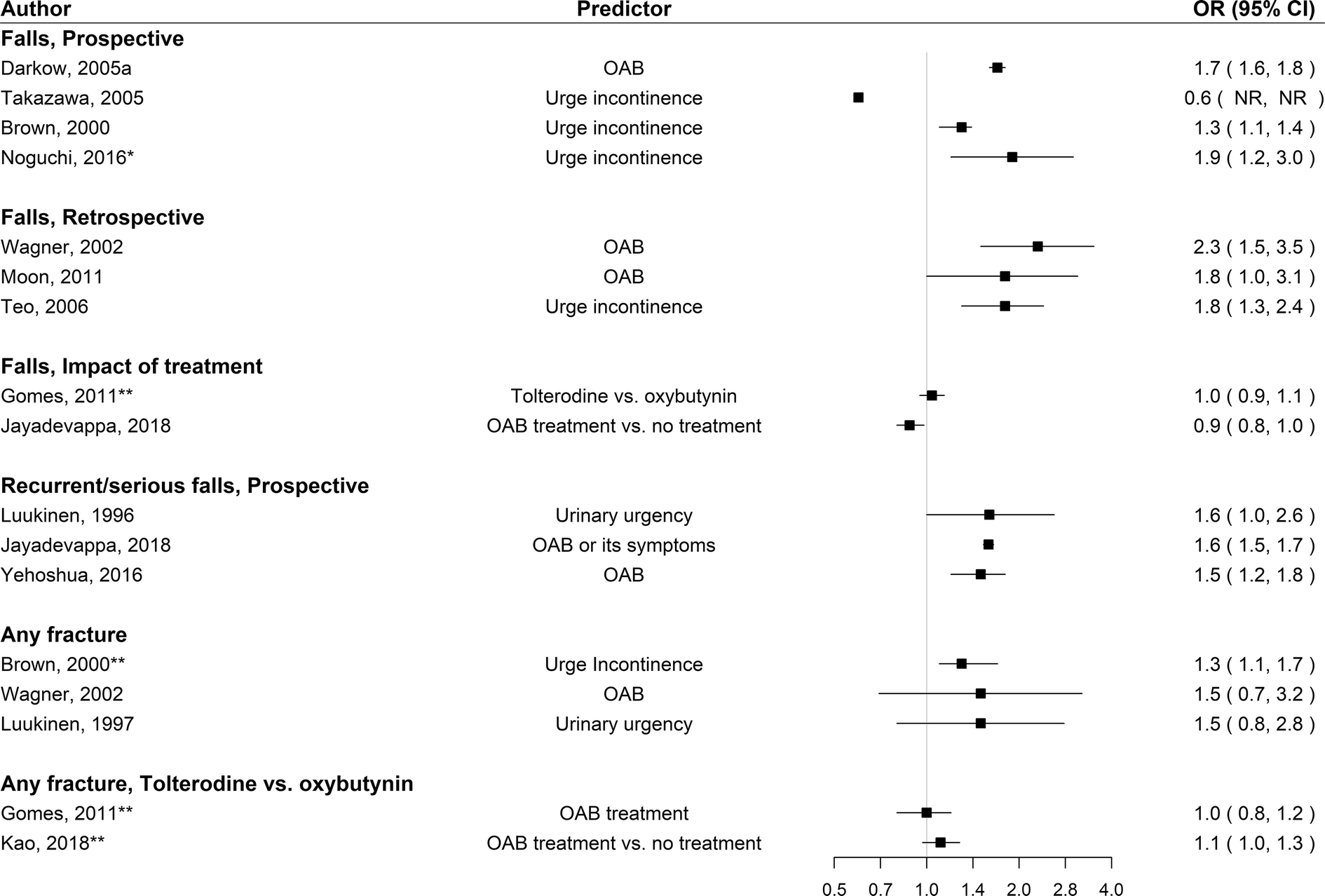



Figure 4 The Association Between Overactive Bladder And Falls And Fractures A Systematic Review Springerlink
Let's say that in your experiment the calculated Hazard Ratio is equal to 065 This is how you can interpret and report it The mortality rate in a group of smokers drops by 35% compared to the group of highcalorie diet The mortality rate among smokers is 065 times of that among patients with a highcalorie dietOdds that a person with an adverse outcome was at risk (or exposed)/ Odds that a person without an adverse outcome was at risk (or exposed) Odds group 1/odds group 2Intervals and statistical vs clinical significance This second article will discuss absolute and relative risks, number needed to treat and harm, KaplanMeier survival curves and understanding diagnostic tests What are absolute risks, relative risks, odds ratios and hazard ratios?




Chapter 6 Choosing Effect Measures And Computing Estimates Of Effect Cochrane Training




Comparison Of Tenofovir Versus Entecavir On Reducing Incidence Of Hepatocellular Carcinoma In Chronic Hepatitis B Patients A Systematic Review And Meta Analysis Gu Journal Of Gastroenterology And Hepatology Wiley Online Library
Risk ratios, odds ratios, and hazard ratios are three common, but often misused, statistical measures in clinical research In this paper, the authors dissect what each of these terms define, and provide examples from the medical literature to illustrate each of these statistical measuresThe risk or odds ratio is the risk or odds in the exposed group divided by the risk or odds in the control group A risk or odds ratio = 1 indicates no difference between the groups A risk or odds ratio > 1 indicates a heightened probability of the outcome in the treatment group The two metrics track each other, but are not equal Hazard ratio (E vs C) for the time period Please note that results shown are rounded to 2 decimal places, but the calculations used the raw numbers from the previous column ( c ) and therefore give different results than if the rounded numbers were used (eg, 006/008 = 075)




Jci Insight Plasma Copeptin And Chronic Kidney Disease Risk In 3 European Cohorts From The General Population



Hazard Ratio Vs
About Press Copyright Contact us Creators Advertise Developers Terms Privacy Policy & Safety How works Test new features Press Copyright Contact us CreatorsThe odds ratio should not be confused with relative risk or hazard ratios which might be close in certain cases, but are completely different measures Odds ratio vs Risk Ratio (Relative Risk) Odds ratios are not very intuitive to understand, but are sometimes used due to convenience in plugging them in other statistics95% confidence interval, ) and incident ASCV events (hazard ratio, 187




Interpretation Of The Hazard Ratio In A Spline Model On Continuous Exposures Cross Validated




Hazard Ratio Odds Ratio
Variable on the hazard or risk of an event Hazard ratio can be considered as an estimate of relative risk, which is the risk of an event (or of developing a disease) relative to exposureRelative risk is a ratio of the probability of the event occurring in the exposed group versus the control (nonexposed) groupEssentially, the odds ratio estimate the _______ in these types of studies Risk ratio What is the definition of odds ratio? Furthermore, the odds ratio of 258 for all persons is not a weighted average of the odds ratios of 265 for men and 291 for women, as 258 is closer to 1 than either stratumspecific estimate Adjusting the odds ratio of 258 for sex, using MantelHaenszel methods, produces an odds ratio of 279, though sex is not a confounder
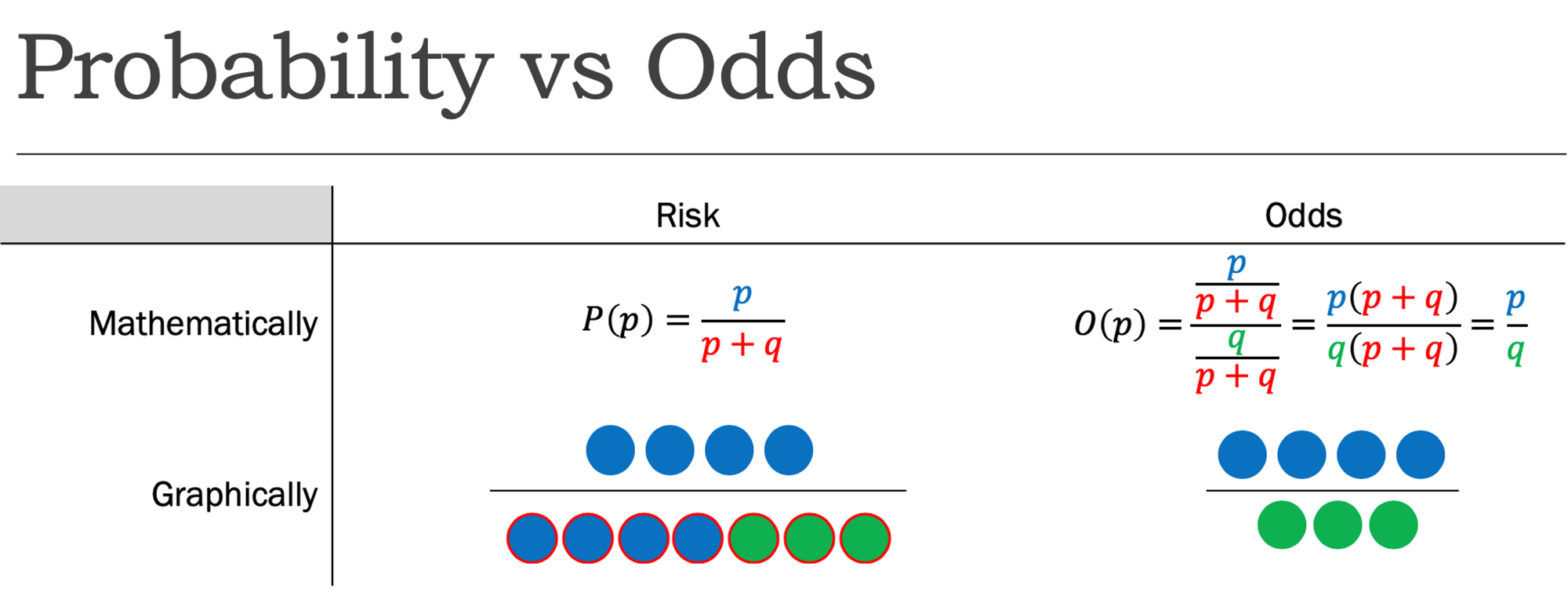



Cureus What S The Risk Differentiating Risk Ratios Odds Ratios And Hazard Ratios




Various Estimates For The Odds Ratios And Hazard Ratios Of Herpes Download Table
Risk Ratio vs Odds Ratio Whereas RR can be interpreted in a straightforward way, OR can not A RR of 3 means the risk of an outcome is increased threefold A RR of 05 means the risk is cut in half But an OR of 3 doesn't mean the risk is threefold;After converting the odds ratio to a risk ratio, the actual risk is 14 (mortality is 14 times more likely in patients with ICU delirium compared to those without ICU delirium) Because the incidence rate in the nondelirium group is high, the odds ratio exaggerates the true risk demonstrated in the study




Clinical Significance Of Pre Treated Neutrophil Lymphocyte Ratio In The Management Of Urothelial Carcinoma A Systemic Review And Meta Analysis Abstract Europe Pmc
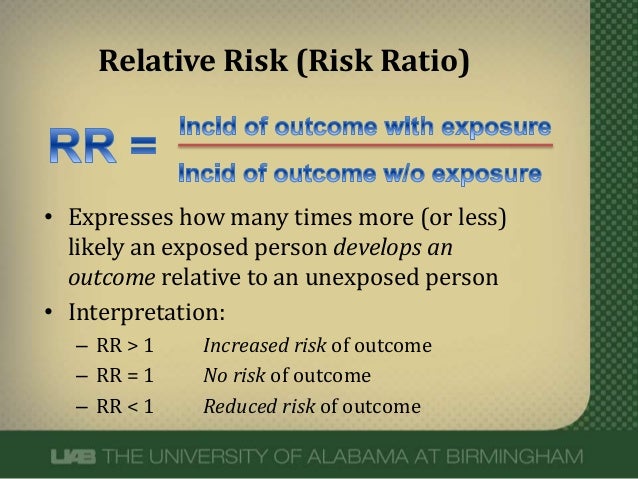



いろいろ Odds Ratio Vs Relative Risk ただの悪魔の画像




Abc Transporter Genes And Risk Of Type 2 Diabetes Diabetes Care




Odds Ratio




Frontiers Intratumor Heterogeneity Of Myo18a And Fbxw7 Variants Impact The Clinical Outcome Of Stage Iii Colorectal Cancer Oncology




Hazard Ratio Odds Ratio Relative Risk And Increase In Hospital Download Scientific Diagram




Hazard Ratios And Survival Curves Youtube




Should One Derive Risk Difference From The Odds Ratio 19 By Pavlos Msaouel Bayes Datamethods Discussion Forum




Outcomes Shown For A Odds Ratio Analysis And B Hazard Ratio Download Scientific Diagram




Hazard Ratios For Progression Free And Overall Survival And Odds Ratios Download Scientific Diagram




Relaciones Entre Riesgo Relativo Hazard Ratio Y Odds Ratio Download Scientific Diagram




Significant Improvement In Short And Long Term Kidney Transplant Survival Despite Stagnant Rates Of Delayed Graft Function Atc Abstracts




Eposters How Big Is A Big Hazard Ratio



Plos One Influence Of Clinicopathological Characteristics And Comprehensive Treatment Models On The Prognosis Of Small Cell Carcinoma Of The Cervix A Systematic Review And Meta Analysis




Odds Ratios And Log Odds Ratios Clearly Explained Youtube
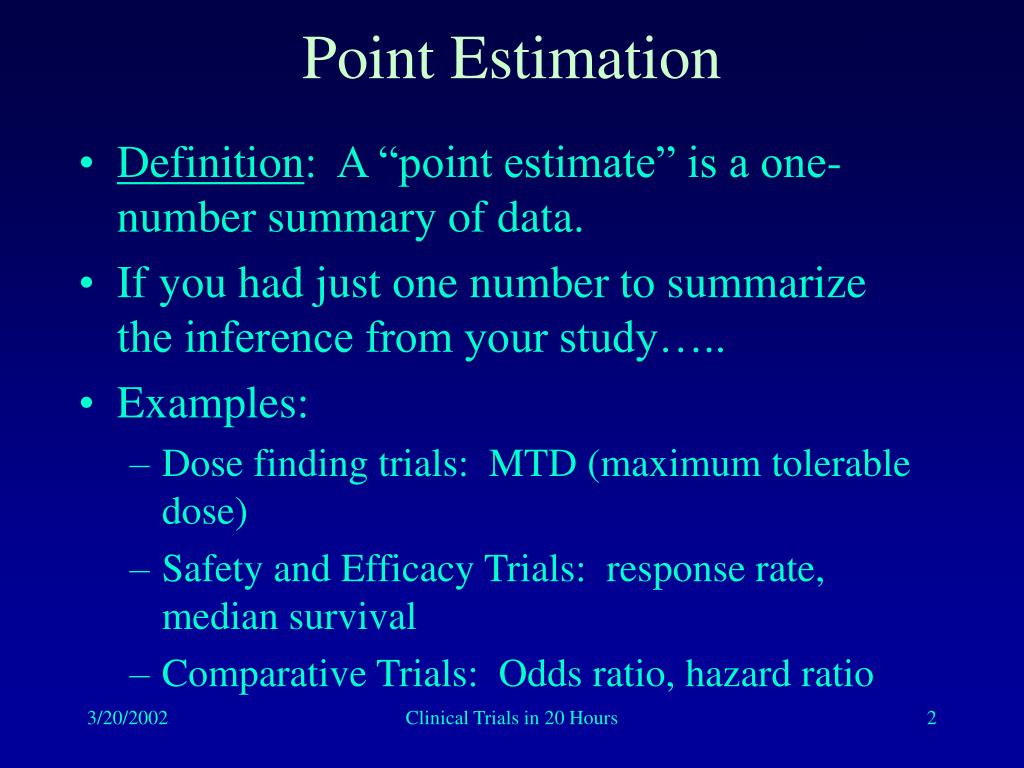



Ppt Point Estimation Odds Ratios Hazard Ratios Risk Differences Precision Powerpoint Presentation Id




Clinical Trials In Hours Point Estimation Odds




Pdf Abstracts Cross Sectional Study Believability Of Relative Risks And Odds Ratios In Semantic Scholar



2




A Beginner S Guide To Interpreting Odds Ratios Confidence Intervals And P Values Students 4 Best Evidence




Hazard Ratio Vs Odds Ratio ただの悪魔の画像




Relative Risk Odds Ratios Youtube




Hazard Ratio Relative Risk Or Odds Ratio Of Selected Outcomes For The Download Table




Reply On The Use Of Odds Ratios Versus Hazard Ratios Meta Regression And Heterogeneity In Meta Analyses Journal Of The American College Of Cardiology
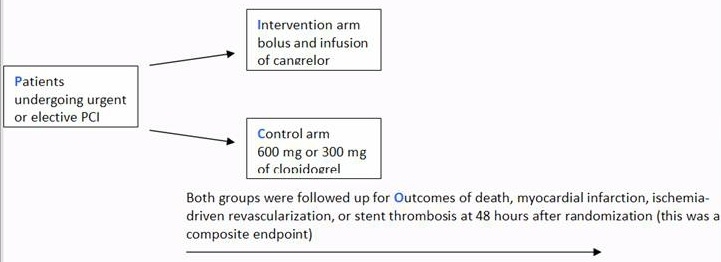



A Beginner S Guide To Interpreting Odds Ratios Confidence Intervals And P Values Students 4 Best Evidence
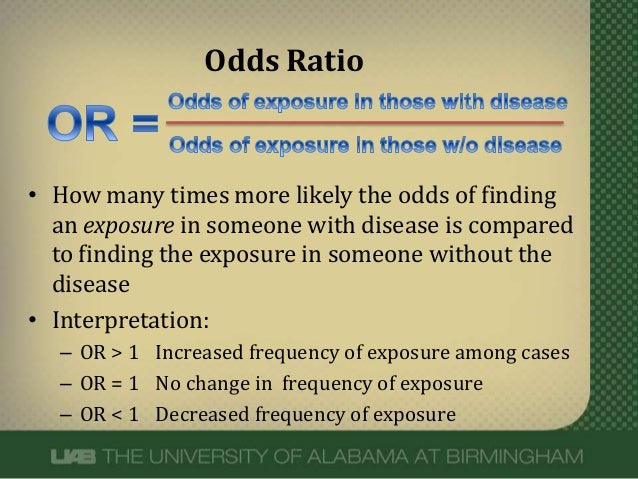



What Does An Odds Ratio Or Relative Risk Mean




Study Mortality With Hazard Rates Not Probabilities Biorxiv




Odds Ratio Wikipedia




Interpreting Hazard Ratios Youtube
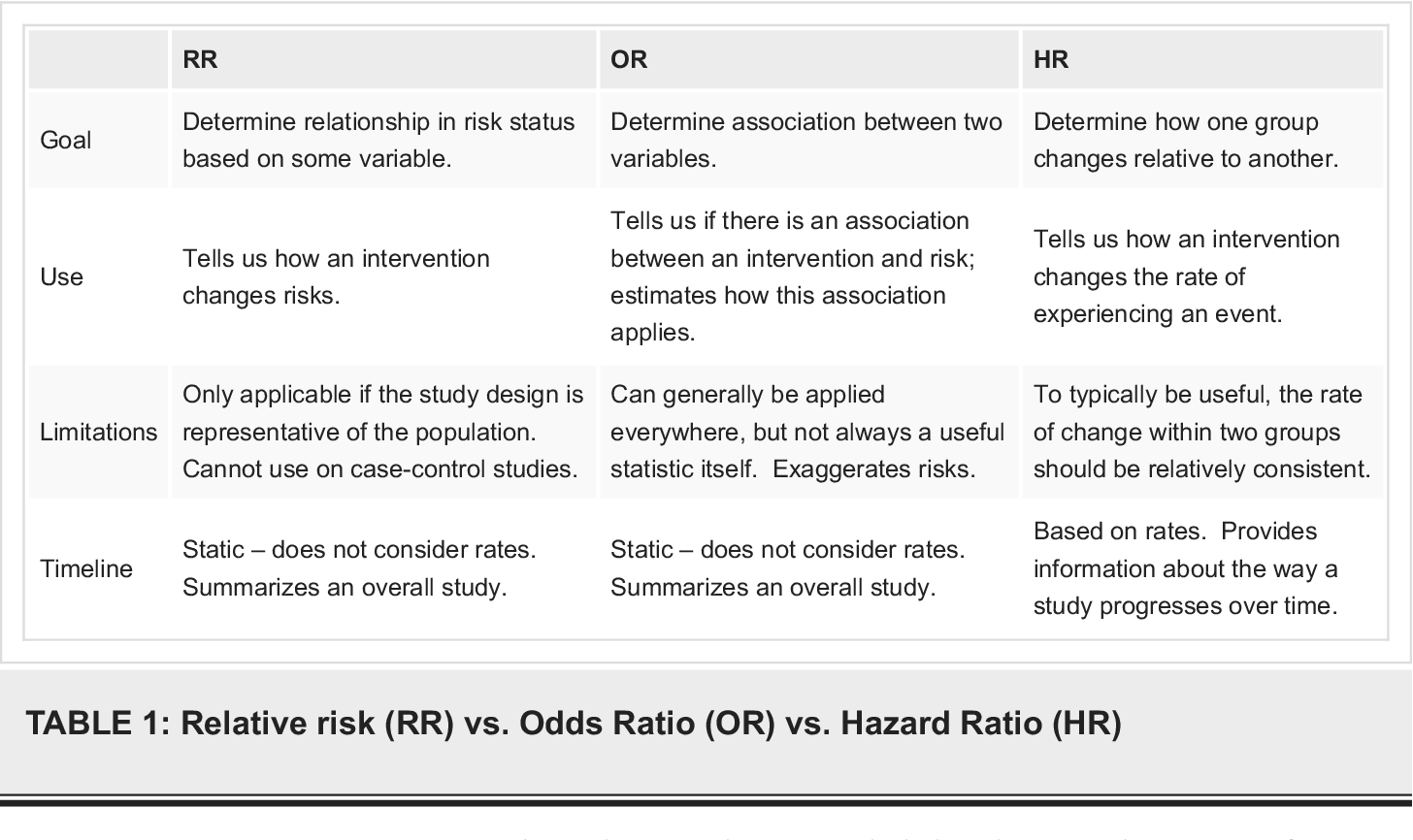



Pdf What S The Risk Differentiating Risk Ratios Odds Ratios And Hazard Ratios Semantic Scholar



Confluence Mobile Wiki Ucsf
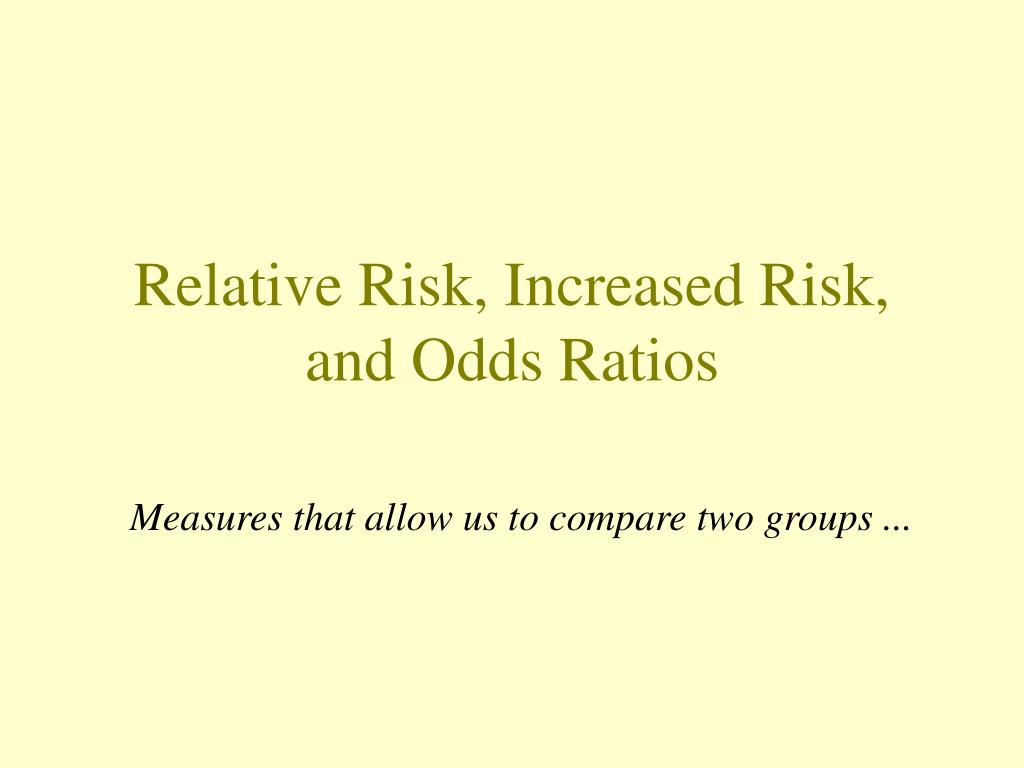



Ppt Relative Risk Increased Risk And Odds Ratios Powerpoint Presentation Id
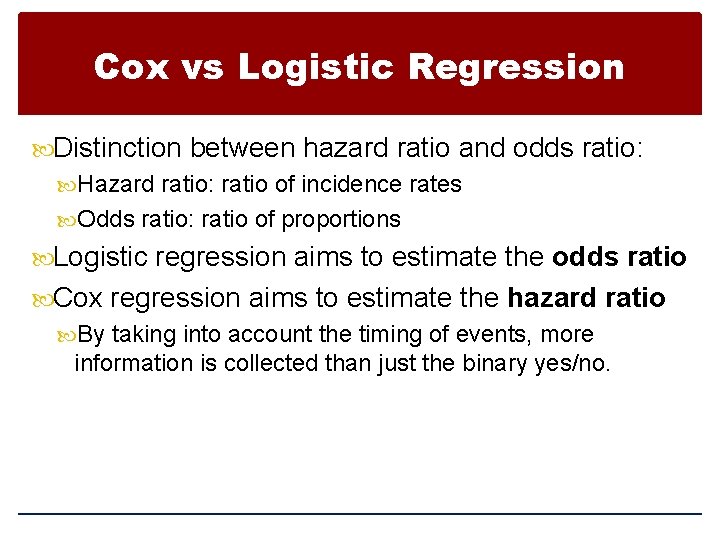



Introduction To Biostatistics For Clinical And Translational Researchers




Odds Ratio Hazard Ratio And Relative Ratio Hazard Ratio And Relative Risk 63 Table 5 Examples Of Rr And Or For Different Probabilities Dagger 1 Dagger 2 Rr Or 4 1 4 6 2 3 67 58 04 Pdf Document




Crude And Adjusted Measures Of Odds Ratio Or And Hazard Ratio Hr Download Table




Thread By Profdfrancis Risk Ratio Odds Ratio Hazard Ratio 2nd And Final Part Of The Tweetorial From Orbita Hq Fun Easy And Informativ Meded Foamed Cardiology Cardiotwitter



Hazard Ratio




Association Of Bmi Diabetes And Risk Of Tuberculosis A Population Based Prospective Cohort International Journal Of Infectious Diseases




The Difference Between Relative Risk And Odds Ratios The Analysis Factor
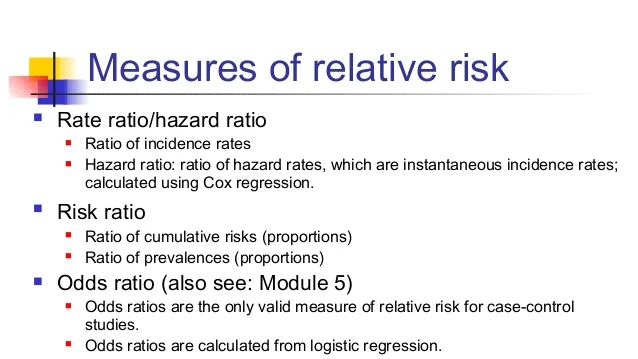



Odds Vs Risk Ratio ただの悪魔の画像




Study Mortality With Hazard Rates Not Probabilities Biorxiv
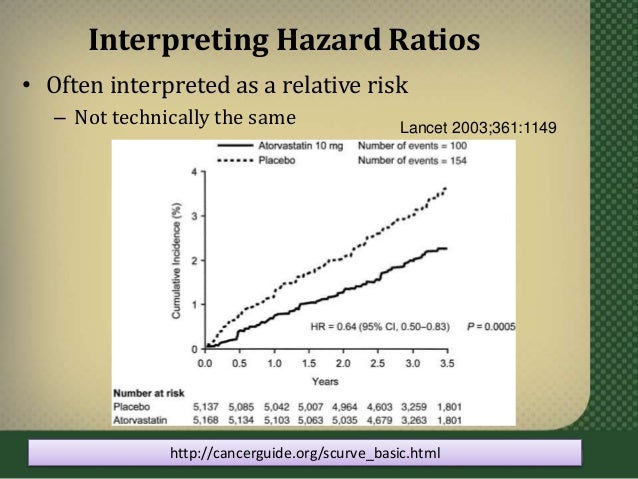



Hazard Ratios



1
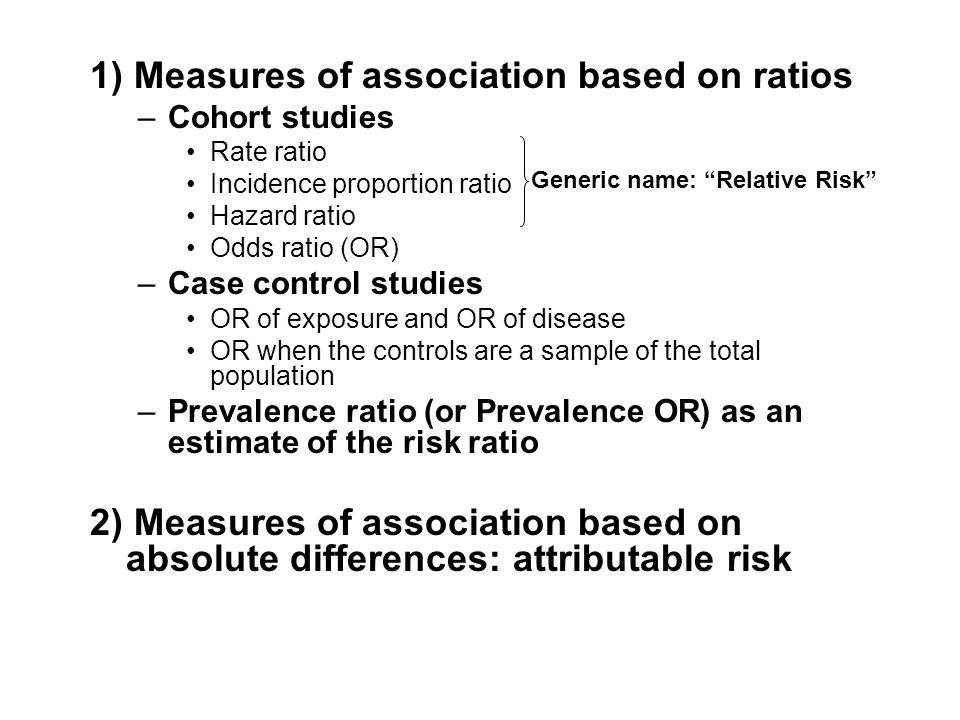



Measures Of Association Ppt Download



2




1 Relative Risks Odds Ratios Or Hazard Ratios Of Risk Factors For Download Table




Odds Ratio Hazard Ratio And Relative Risk Janez Stare Semantic Scholar




Effect Sizes Basicmedical Key




Native T1 Mapping Extracellular Volume Mapping And Late Gadolinium Enhancement In Cardiac Amyloidosis A Meta Analysis Sciencedirect
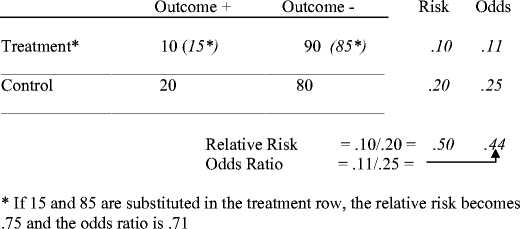



Tips For Teachers Of Evidence Based Medicine Understanding Odds Ratios And Their Relationship To Risk Ratios Springerlink




Study Mortality With Hazard Rates Not Probabilities Biorxiv




Applied Interpretation Of Clinical Studies Jim Hoehns Pharm D ps Fccp Ppt Download



Forest Plots Of Hazard Ratios Hrs For Overall Survival A And Odds Download Scientific Diagram




Statistics For Afp Dr Mohammad A Fallaha Afp




Odds Ratios And Risk Ratios Youtube




Interpreting Hazard Ratios Youtube



Uberlebenszeitanalyse



Relative Risk Ratios And Odds Ratios




7 Stats Ideas Research Methods Statistics Math Nursing Research
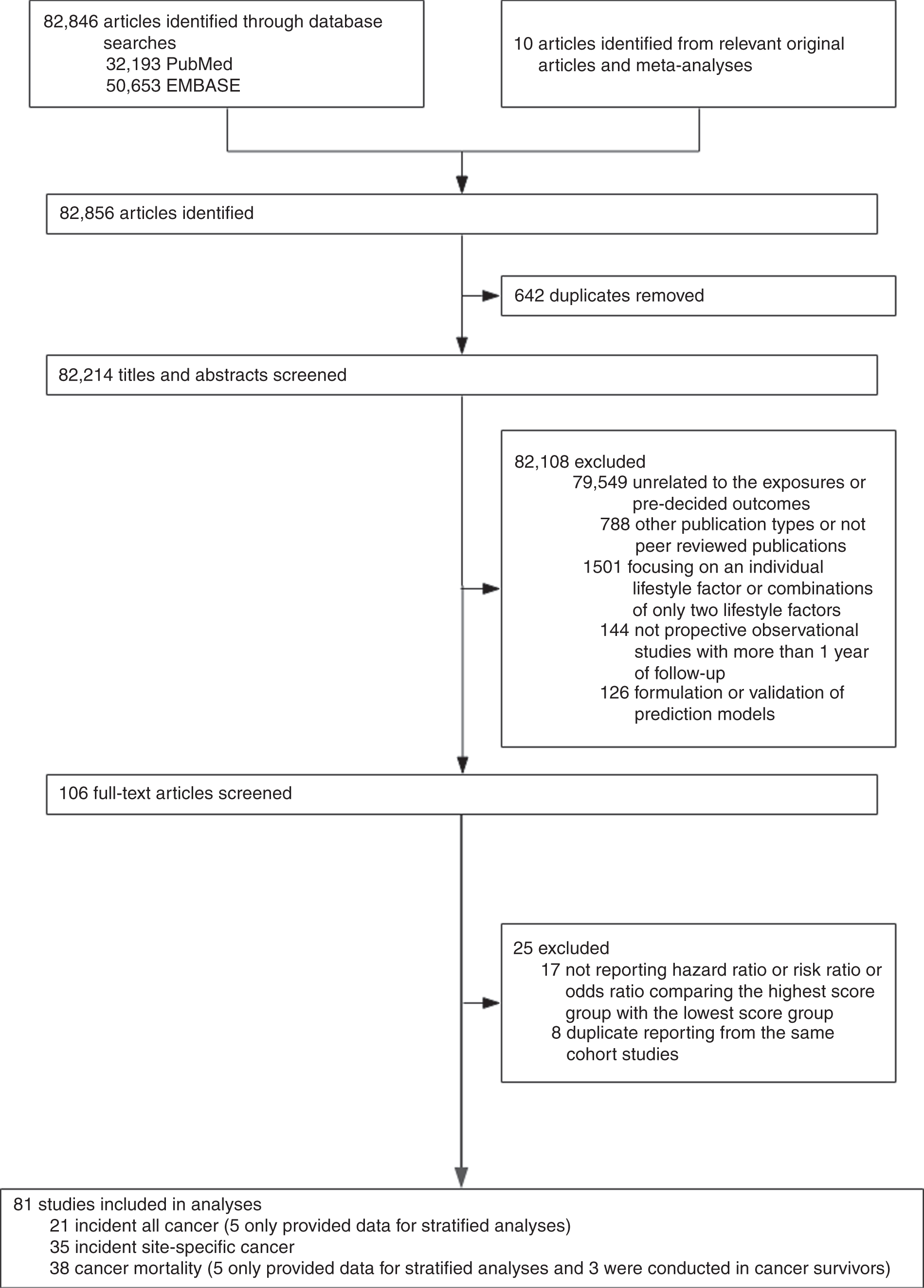



Combined Lifestyle Factors Incident Cancer And Cancer Mortality A Systematic Review And Meta Analysis Of Prospective Cohort Studies British Journal Of Cancer
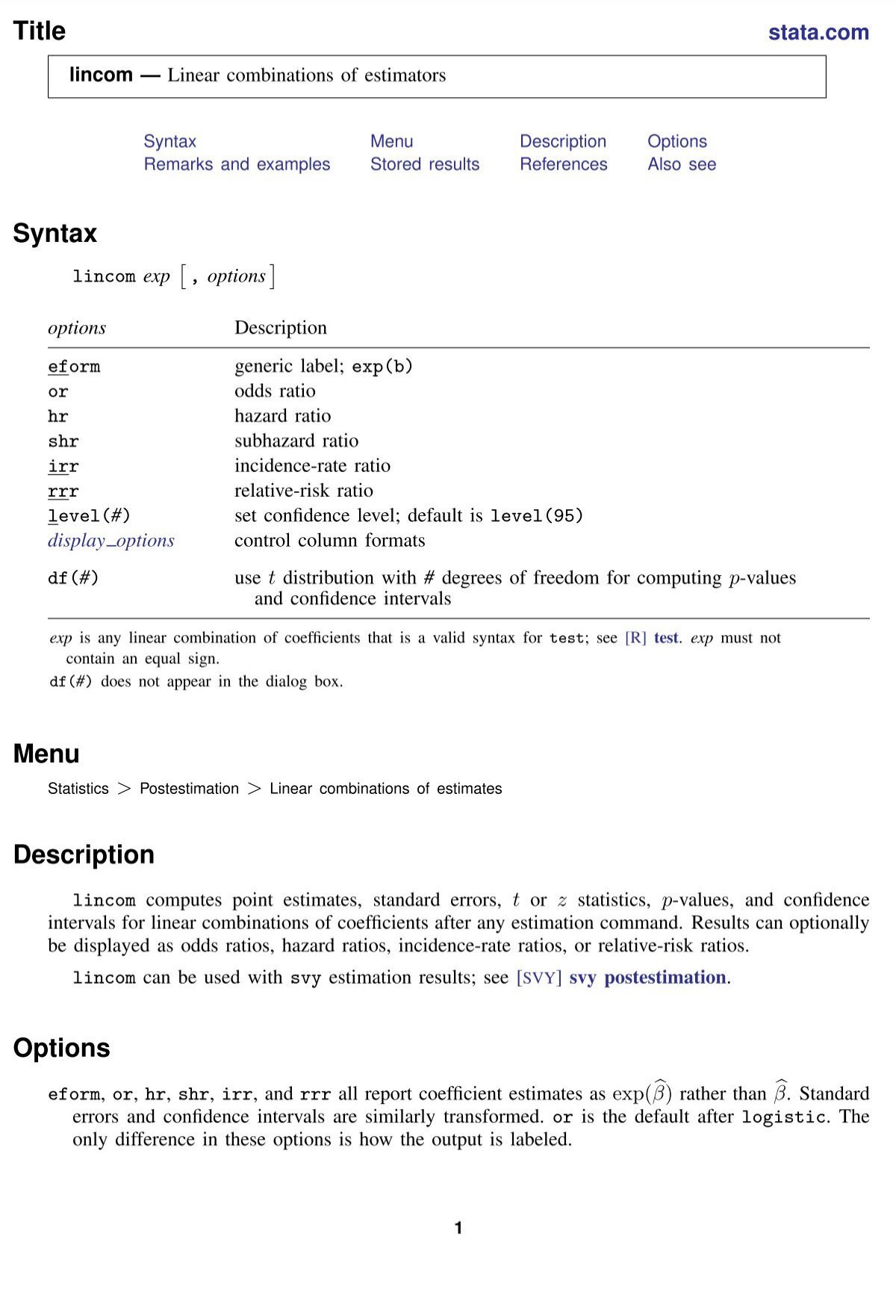



Lincom Stata




Calculating The Risk Ratio Odds Ratio And Risk Difference In A Randomised Controlled Trial Youtube



Plos One Delirium As A Predictor Of Mortality And Disability Among Hospitalized Patients In Zambia
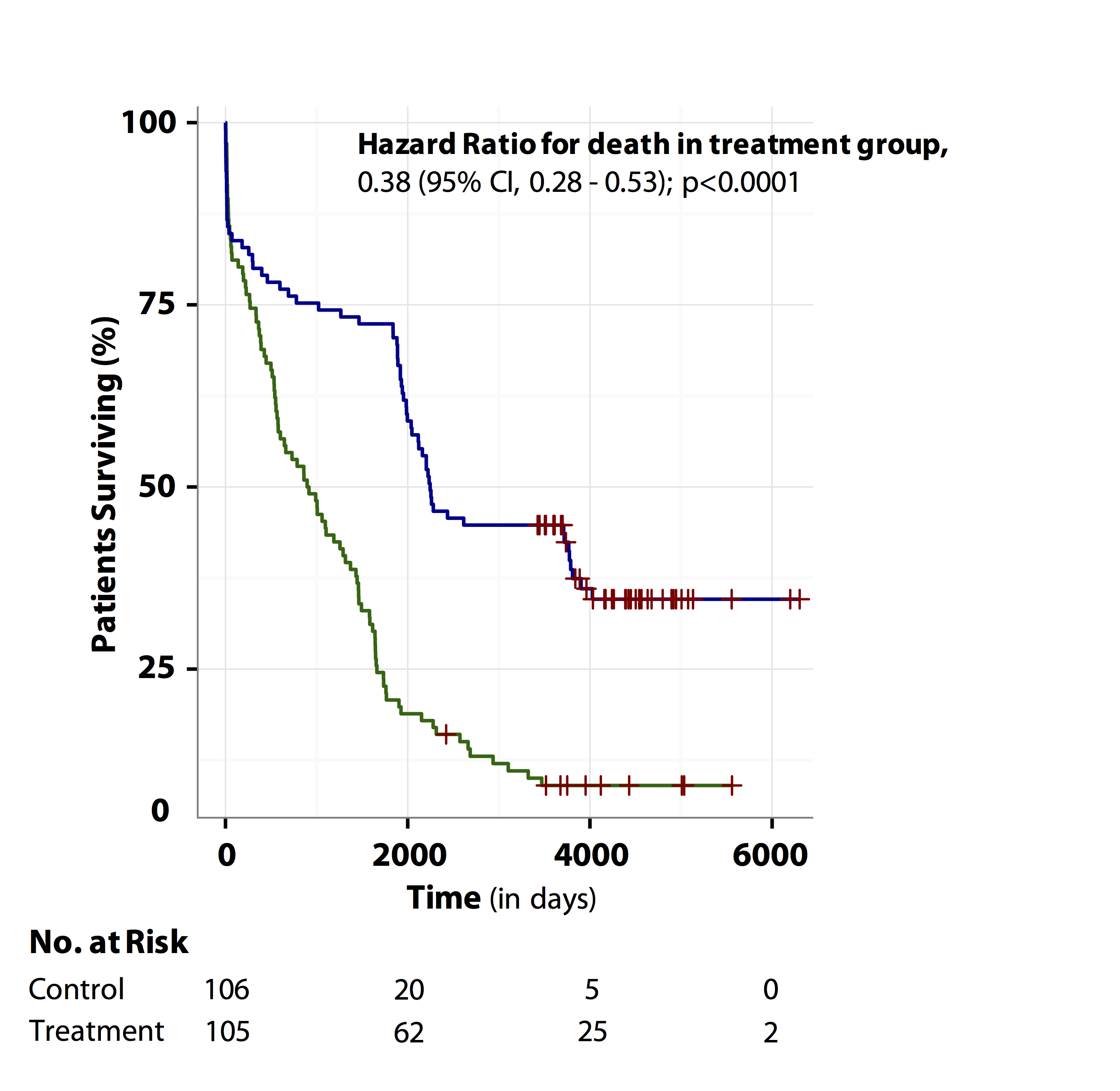



Tutorial About Hazard Ratios Students 4 Best Evidence




Crude And Adjusted Measures Of Odds Ratio Or And Hazard Ratio Hr Download Table



How To Remember The Differences Between Odds Ratio Hazard Ratio And Likelihood Ratio And In What Instances They Should Be Applied Quora
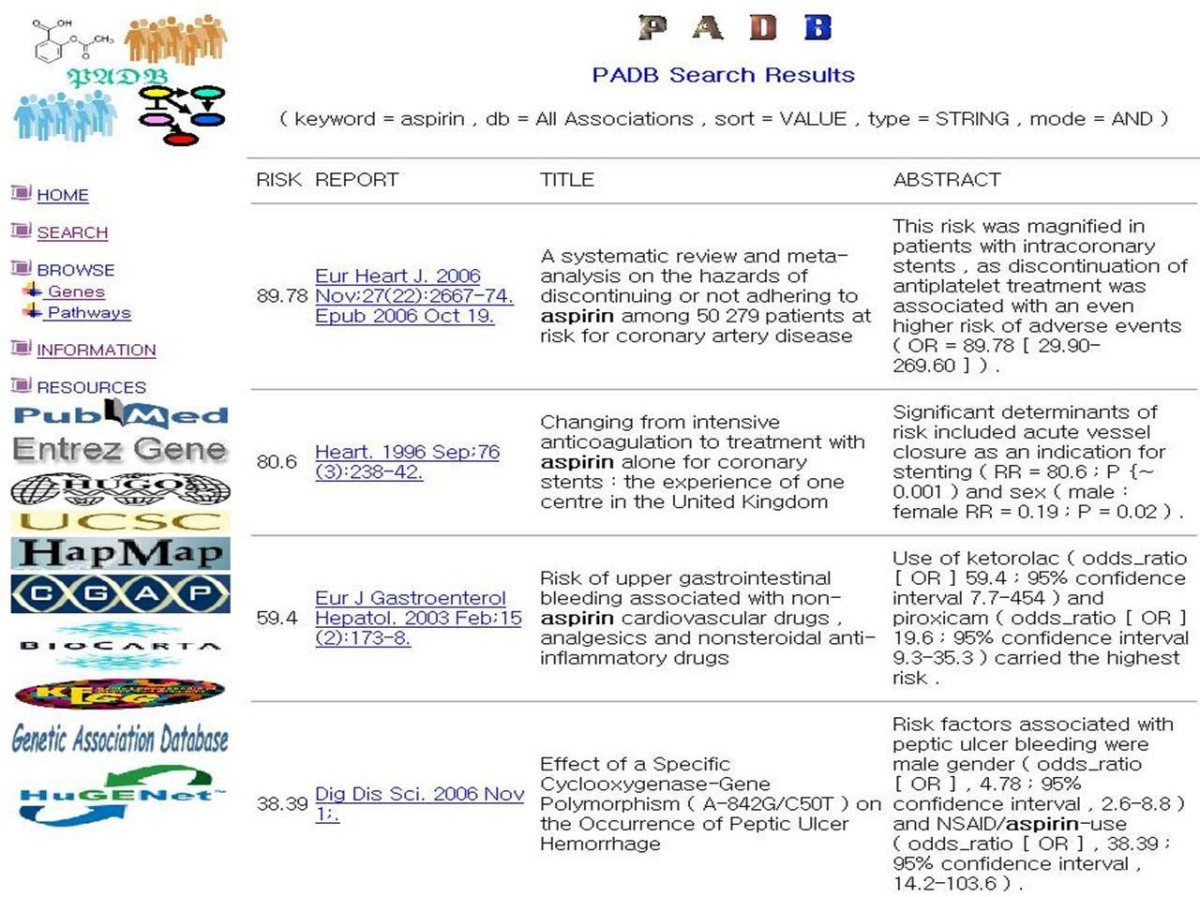



Padb Published Association Database Bmc Bioinformatics Full Text




How To Interpret And Use A Relative Risk And An Odds Ratio Youtube



2
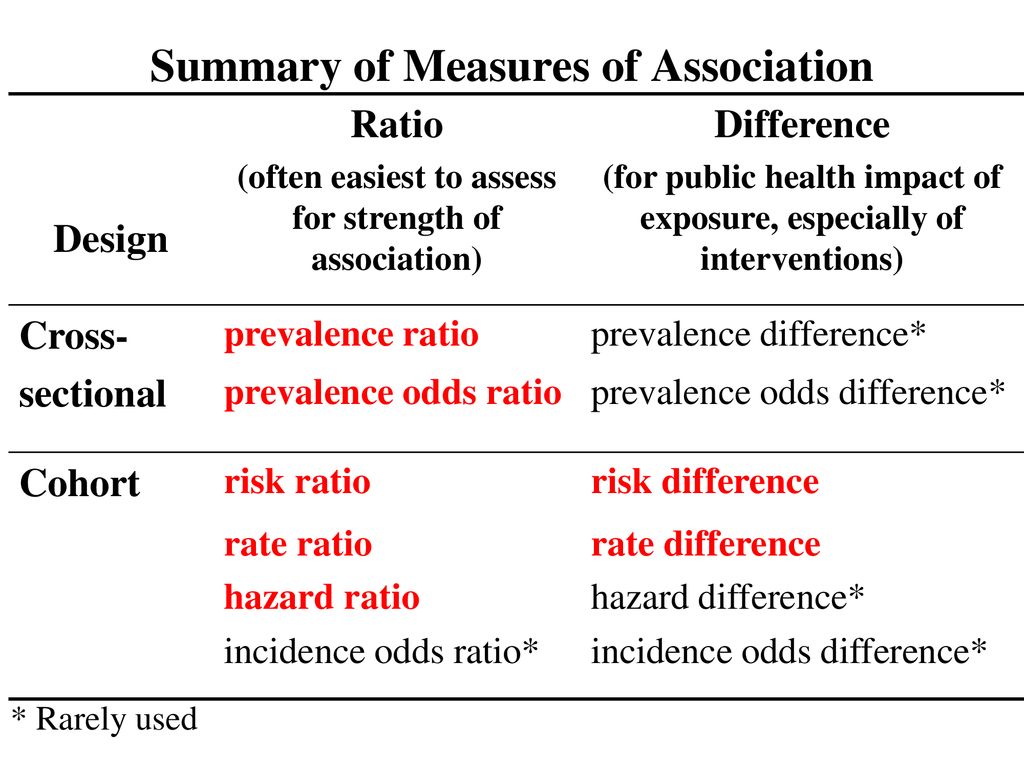



Who Saw This In The San Francisco Chronicle In The Past Week Ppt Download




Statistics 103 Monday July 10 17 Survival Analysis



Hazard And Odds Ratios Image Eurekalert Science News Releases




Hazard Ratio Wikipedia
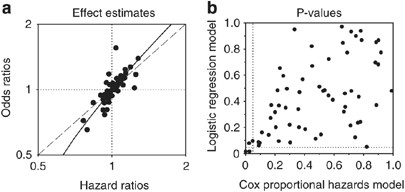



Cox Proportional Hazards Models Have More Statistical Power Than Logistic Regression Models In Cross Sectional Genetic Association Studies European Journal Of Human Genetics


